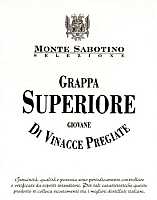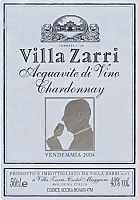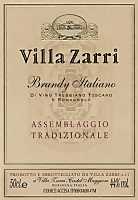
Wine Culture and Information since 2002 - Volume 22
 Wine Culture and Information since 2002 - Volume 22 |
|
SaffronProduced from the stigmas of Crocus Sativus, saffron is a very ancient spice, capable of giving its characteristic aroma to dishes and its brilliant golden yellow color |
|
The plant from which is obtained saffron, name derived from the Persian za'faran or zaa-fran meaning “yellow”, is Crocus Sativus, belonging to the family of iridaceae, genus Crocus. The adult plant is made of a bulb of about 5 centimeters, containing about twenty gems, of which only three will give origin to leaves and flowers, whereas the remaining ones will produce secondary bulbs. During development of the plant, two or three sprouts come out from the soil containing leaves and flowers. At the center of the flower are found three red stigmas and from which are obtained the famous spice known as “saffron”.
Crocus Sativus derives from the artificial selection of a plant coming from Crete island and, because it is an intensive and artificial selection, that is made by man, the plant is sterile, therefore the only way of reproduction is by cloning it, by separating secondary bulbs from primary bulbs. The saffron plant likes climates with moderate rains, an altitude from 500 to 700 meters above sea level, it does not like rainy climates and soils retaining water. It likes permeable and well drained soils. As for temperature, the plant is very tolerant: in summertime it can stand to high temperatures and in wintertime it can stand to light frosts and temperature down to -10° C. The bulb of the saffron plant is very sensitive to the action of parasite fungi. Some animals, such as boar and porcupine, are very greedy of the bulbs of Crocus Sativus, therefore they are potentially dangerous for non fenced plantations. Also mice are to be considered dangerous for stored bulbs waiting to be planted. Saffron is among the richest spices in carotenoids and contains about 150 volatile aromatic substances.
|
||||||||
|
The plant comes from the Middle East or from the East, from the areas of Iran, India and Kashmir. The saffron plant, that is Crocus Sativus, was introduced in Italy by a Dominican monk around 1300, the culture soon spread all over the country and then faced a period of decline, whereas today it seems to have a renewed interest. Saffron is known since immemorial times: it was mentioned by Homer in the Iliad, whereas Pliny the Elder knew its therapeutic properties as a remedy for stomach ulcers, as well as a remedy for cough and angina pectoris. Egyptians used it for dyeing fabrics, to make perfumes and unguents and, last but not the least, to flavor foods. The School of Salerno praised its cheering and comforting properties. In the Bible was mentioned in the “Song of Solomon” book, in the fourth chapter, associated to the most aromatic and precious essences. In the Middle Age it was used as a remedy against epilepsy, it was used as a remedy against plague, and it was known for its cheering effects. In commercial exchanges of the Republic of Venice, saffron was very important and was opened a specific office, exclusively reserved for the trading of this spice. From the thirteenth century on, commercial exchanges increased and, at the same time, the middle class began to learn, besides the pleasures of the body, also the pleasure of the table. Ortensio Lando, an Augustinian monk, mentioned saffron in one of his writings, and he asserted during the period of Lent the risk of putting on weight was very high, because the fish cooked with the aromatic herbs were very delicious. In the monastery of “Santa Colomba” in Perugia was found an old cookbook, dated back to the 1500s, in which are mentioned many recipes based on saffron. Many believe during the Middle Age spices were used to cover the taste of meat that was not well kept. This is probably false, as whoever could afford buying spices could also easily buy fresh meat, also every day. Adding spices to food was a way to show off richness and power. This hypothesis is also confirmed by a writing of “Ménagier”, a rich executive who lived in Paris during the fourteenth century, and wrote an “instruction manual” for the house dedicated to his young wife: «…dishes, whenever possible, must be colored: the chicken must be boned, stuffed with meat, eggs and cheese, it must be boiled and then grilled in a spite, brushed with egg yolks and saffron…Babylonians used to burn incense, myrrh and saffron during processions. According to Assyrian customs, Semiramide cultivated saffron in the hanging gardens of Babylonia, one of the seven wonders of the world. Cleopatra used it as a cosmetic and to dye her skin, nails, lips and hair. In ancient Jerusalem is was greatly demanded for liturgies. Saffron was not used only for cooking and it was frequently used for the production of cosmetics. In 2000 BC in Crete Island saffron was used to color the breast and lips of women. During the Greek civilization the aesthetical aspect of a person was exalted and the care for the body and dressing became very important. Among the ingredients used for perfumes and colorants, saffron was one of the most important ones, and it became the main ingredient of the two most exclusive perfumes of Athens: Susinum and Crocinum. Greek mythology tells about a handsome man named Crocus who fell in love with the beautiful nymph Smilace, the favorite one of the god Hermes. The god, in order to punish Crocus, transformed him into a flower of saffron. Also according to Greek mythology, the bed of Zeus, king of the Olympus, was spread of saffron flowers. Romans, despite imperial laws forbade it, imported perfumes and essences from Greece and from other countries. The use of these perfumes became common among rich people and they became a status symbol. In the tables of the most rich people, wine was frequently mixed to saffron. In Roman thermae, rich people used to take a bath in water mixed essences and saffron. The cultivation of saffron, called for many centuries “vegetal gold”, began in Europe, and at the end of 1300s it was very common in Italy, Spain and Greece. In Italy it is mainly cultivated in Abruzzo, in the upland of Navelli, in Sardinia in the production areas of saffron DOP, in Umbria at Cascia and in Tuscany in the province of Siena. In these areas the production of saffron is still active and, in some of them, the quality is very high. In Europe, saffron was certainly introduced by Arabs around the tenth century, however some believe it was introduced by Phoenicians, skilled merchants of this precious spice.
|
||||
|
Saffron has many qualities, such as stimulating metabolism, helping digestion, contrasting aging, reducing the level of cholesterol and lowering blood pressure. The high content in carotenoids gives saffron antioxidant qualities as well as the property of increasing immunitary defenses. Saffron is frequently used by people on a weight loss diet, as it can flavor foods while keeping the calories low. Chinese medicine recognizes to saffron detoxifying, depurative and anti inflammatory properties. Indian medicine suggests the daily consumption of saffron in order to help digestion and to contrast bowel's inflammations. In past times saffron was known for its sedative and anti spastic properties. The excessive use of saffron can cause vertigo, torpor, hemorrhages and the reduction of the number of platelets. Saffron is currently used by food industry and in cooking as a spice and as a colorant. In cooking saffron gives its best with dishes made of rice, seafood and white meats, it is also used to exalt the taste of dishes made of light flavored vegetables. The active principles are represented by crocine, picocrocine and safranel. Crocine is responsible for the color of saffron, whereas safranel is responsible for the aroma. Crocine is a yellow colored substance soluble in water: in case it is kept in a moist environment, the absorption of water causes its decaying therefore producing crocetine, insoluble and with a reddish color; for this reason, when it comes in contact with water, saffron rekindles its colors. The harvesting of saffron is pretty laborious: flowers must be harvested by hand, in the morning, when flowers are still closed, and by expert and delicate hands in order not to damage stigmas. The stigmas are manually separated from the flower and then they are toasted or dried. To obtain one kilogram of finished product are required about 150,000 flowers. The phases of harvesting and toasting - or drying - are very delicate because the organoleptic quality of saffron largely depends on these operations. For this reason a quality product is very expensive. Powdered saffron usually found in many supermarkets is sometimes made of a small part of pure saffron, while the rest, most of the times, is made of less aromatic spices, such as turmeric. This explains the low price as well as its light taste.
|
AquavitaeReview of Grappa, Distillates and Brandy |
|
|
| Distillates are rated according to DiWineTaste's evaluation method. Please see score legend in the "Wines of the Month" section. |

|
|
Grappa di Moscato |
|
| Distilleria Zanin (Veneto, Italy) | |
| Raw matter: Pomace of Muscat Blanc | |
| Price: € 10.00 - 70cl | Score: |
| This grappa of Muscat is colorless, limpid and crystalline. The nose reveals intense, clean, pleasing and refined aromas of grape, peach, apple, pear, orange, candied fruit and white rose with almost imperceptible alcohol pungency. In the mouth is intense with perceptible alcohol pungency which tends to dissolve rapidly, good correspondence to the nose, balanced sweetness, agreeable. The finish is persistent with flavors of grape, peach and banana. This grappa is distilled with a discontinuous alembic still. Alcohol 40%. | |

|
|
Grappa Superiore Giovane Monte Sabotino |
|
| Distilleria Zanin (Veneto, Italy) | |
| Raw matter: Pomace of grapes from Veneto | |
| Price: € 20.00 - 70cl | Score: |
| This grappa is colorless, limpid and crystalline. The nose reveals intense, clean, pleasing and refined aromas of plum, pear, hazelnut, licorice, raspberry and apple with almost imperceptible alcohol pungency. In the mouth is intense with perceptible alcohol pungency which tends to dissolve rapidly, good correspondence to the nose, balanced sweetness, pleasing roundness. The finish is persistent with flavors of plum, apple and hazelnut. This grappa is distilled with a discontinuous alembic still. Alcohol 40%. | |

|
|
Acquavite di Vino Chardonnay 2004 |
|
| Villa Zarri (Emilia Romagna, Italy) | |
| Raw matter: Wine from Chardonnay grape | |
| Price: € 22.00 - 50cl | Score: |
| This wine brandy is colorless, limpid and crystalline. The nose denotes intense, clean, pleasing and refined aromas of pear, banana, apple, and plum with almost imperceptible alcohol pungency. In the mouth is intense with perceptible alcohol pungency which tends to dissolve rapidly, good correspondence to the nose,balanced sweetness, agreeable. The finish is persistent with flavors of apple and banana. This wine brandy is distilled in discontinuous “Charentais” alembic still and ages for at least 10 months in steel containers. Alcohol 43%. | |

|
|
Brandy Italiano Assemblaggio Tradizionale 10 Anni |
|
| Villa Zarri (Emilia Romagna, Italy) | |
| Raw matter: Wines from Trebbiano Toscano and Trebbiano Romagnolo grapes | |
| Price: € 35.00 - 50cl | Score: |
| This brandy shows an intense amber yellow color, limpid and crystalline. The nose reveals intense, clean, pleasing, refined and elegant aromas of prune, dried fig, tobacco, coffee, vanilla, licorice, chocolate, honey, lavender, hazelnut and ripe banana with almost imperceptible alcohol pungency. In the mouth is intense with perceptible alcohol pungency which tends to dissolve rapidly, pleasing smoothness, balanced sweetness, very agreeable. The finish is very persistent with long flavors of licorice, hazelnut, ripe banana, honey and prune. A well made brandy. This wine brandy is distilled in discontinuous “Charentais” alembic still and it is made of a blend of 10 different wine brandies aged in barrels, of which the youngest is 10 years old. Alcohol 44%. | |
Wine Parade |
|
|
| The best 15 wines according to DiWineTaste's readers. To express your best three wines send us an E-mail or fill in the form available at our WEB site. |
| Rank | Wine, Producer | |
|---|---|---|
| 1 |
| Don Antonio 2003, Morgante (Italy) |
| 2 |
| Sagrantino di Montefalco Collepiano 2003, Arnaldo Caprai (Italy) |
| 3 |
| Nero al Tondo 2001, Ruffino (Italy) |
| 4 |
| Amarone della Valpolicella Classico Costasera 2001, Masi (Italy) |
| 5 |
| Soave Classico Monte Alto 2004, Ca' Rugate (Italy) |
| 6 |
| Chianti Classico Riserva Novecento 2000, Dievole (Italy) |
| 7 |
| Sforzato di Valtellina Canua 2001, Conti Sertoli Salis (Italy) |
| 8 |
| Wine Obsession 2001, Vignamaggio (Italy) |
| 9 |
| Barolo Cannubi Boschis 2001, Sandrone (Italy) |
| 10 |
| Amarone della Valpolicella Classico 2000, Zenato (Italy) |
| 11 |
| Barolo Bussia 2001, Prunotto (Italy) |
| 12 |
| Mater Matuta 2003, Casale del Giglio (Italy) |
| 13 |
| Brunello di Montalcino 1999, Castello Banfi (Italy) |
| 14 |
| Collio Bianco Col Disôre 2004, Russiz Superiore (Italy) |
| 15 |
| Sagrantino di Montefalco 2003, Antonelli (Italy) |
|
||||||||
|
DiWineTaste Polls
|
| |||||||
Privacy Policy | |||||||


| Copyright © 2002-2024 Antonello Biancalana, DiWineTaste - All rights reserved |
| All rights reserved under international copyright conventions. No part of this publication and of this WEB site may be
reproduced or utilized in any form or by any means, electronic or mechanical, without permission in writing from DiWineTaste. |